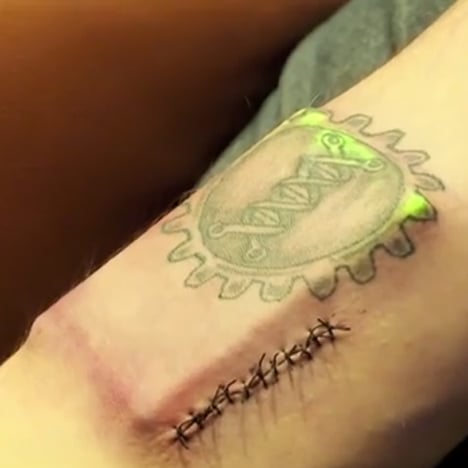News: biohacker Tim Cannon has taken wearable technology to a new extreme by implanting a device into his arm so he can monitor his biometric data on a tablet.
Cannon had the body-monitoring device inserted under the skin on his left forearm to track changes in his body temperature.
Built by his company Grindhouse Wetware, the Circadia 1.0 contains a computer chip within a sealed box about the size of a pack of cards and is powered by a battery that can be wirelessly charged.
Realtime readings of Cannon's body temperature are transmitted from the chip to his Android-powered device via Bluetooth.
He is able to monitor fluctuations and notice if he is getting a fever, as well as look back at recorded data to find patterns he can use to adjust his lifestyle and help keep him healthy.
"I think that our environment should listen more accurately and more intuitively to what's happening in our body," Cannon explained to tech blog Motherboard. "So if, for example, I've had a stressful day, the Circadia will communicate that to my house and will prepare a nice relaxing atmosphere for when I get home: dim the lights, let in a hot bath."
A fellow body modification enthusiast implanted the chip in Cannon's arm without anaesthetics, as doctors aren't authorised to insert non-medical devices.
LEDs built into the case flash when the device connects to the tablet, lighting up the tattoo on Cannon's forearm.
The Circadia 1.0 will be available to buy in the next few months at an estimated cost of $500 (£314). Cannon has reportedly already been able to make a smaller version the device and plans to incorporate a pulse monitor.
By embedding the technology into his body, Cannon has taken a leap forward from removable body-monitoring devices worn around the wrist such as the Nike+ FuelBand and Jawbone's Up, or concept for the flexible electronic circuits that stick directly to the skin. Dezeen editor-in-chief Marcus Fairs discussed how wearable technology will "transform our understanding of ourselves" in his Opinion column earlier this year.
Images are from Motherboard's Youtube video.

